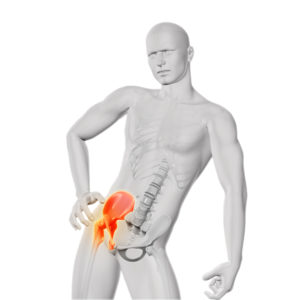Music and Physical Therapy?
July 16, 2018
The Role of Physical Therapy in Music
Snapping hip syndrome, also called dancers’ hip, is a snapping sensation or popping sound heard in the hip while walking, flexing or extending the limbs. This condition can cause discomfort and pain. The good news is that this can be resolved with physical therapy.
Causes
There are several different causes of snapping hip syndrome. These include, but are not limited to:
- Extra-articular (outside the joint structure) causes. This occurs on the lateral (outside) or medial (inside) aspect of the knee.
- Intra-articular (inside the joint) causes. This occurs when there is a tear or presence of loose bodies inside the joint. This can cause effusion (fluid) buildup. This causes the snapping hip syndrome.
Symptoms
- Discomfort in the hip
- Stiffness
- Pain
- Snapping or popping of the hip with some movements
Diagnosis and Treatment
A careful clinical examination and manipulation of the hip joints is completed by a physical therapist. Some of the diagnostic tools include:
- Ultrasound
- Magnetic Resonance Imaging (MRI)
Treatment of Snapping Hip Syndrome
 The treatment of snapping hip syndrome involves a combination of physical therapy, traditional medicine, and at times, surgery.
The treatment of snapping hip syndrome involves a combination of physical therapy, traditional medicine, and at times, surgery.
Physical Therapy: The use of ‘Hydration, Ibuprofen, Rest, Ice, Compression, Elevation’ (also known as HI-RICE) provides the patient with temporary relief in the acute stages. It is best to consult with a physician before taking any medication to rule out allergies and associated side effects. Expert supervision by the physical therapist is essential for gradual healing of the affected regions.
Traditional Medicine: A physician may recommend prescription medications for pain relief and reduction of inflammation. Corticosteroids injections are commonly prescribed. Talk to your physician about which medication is best for you.
Surgical Interventions: If a structural anomaly is causing the problem, surgery may be needed. In general, surgery is the last resort, when traditional medicine and physical therapy have failed. After surgery, physical therapy plays a critical role in the restoration of strength and flexibility.
If you believe you have snapping hip syndrome, and HI-RICE does not help, reach out to your physical therapist.
Snapping You Back Into Action!
Physical therapy provides exciting possibilities to promote strengthening, healing and rehabilitation of the hip and lower limbs. Here are some of the options in the arsenal of the physical therapist: 
- Ultrasound to heal connective tissue (tendons and ligaments).
- Manipulative therapy that includes stretching and massage.
- Resistance training to build the muscle strength.
- Cold compress for acute injuries and heat to relax muscular spasms.
- Low level laser use for muscle and connective tissue injuries.
- Functional electrical stimulation to restore strength in the muscles.
The sooner the therapist assesses the injury and initiates treatment, the better the outcome. Some home remedies that the physical therapist may prescribe include:
- Active stretching
- Passive stretching
- Strengthening exercises
- Light aerobics
Don’t let snapping hipping syndrome (or any hip condition) hold you back from freedom of movement. Call us today, and we will help you snap back into action as quickly as possible. We hope this is music to your ears!
Did you want to start your treatment? book an appointment online!